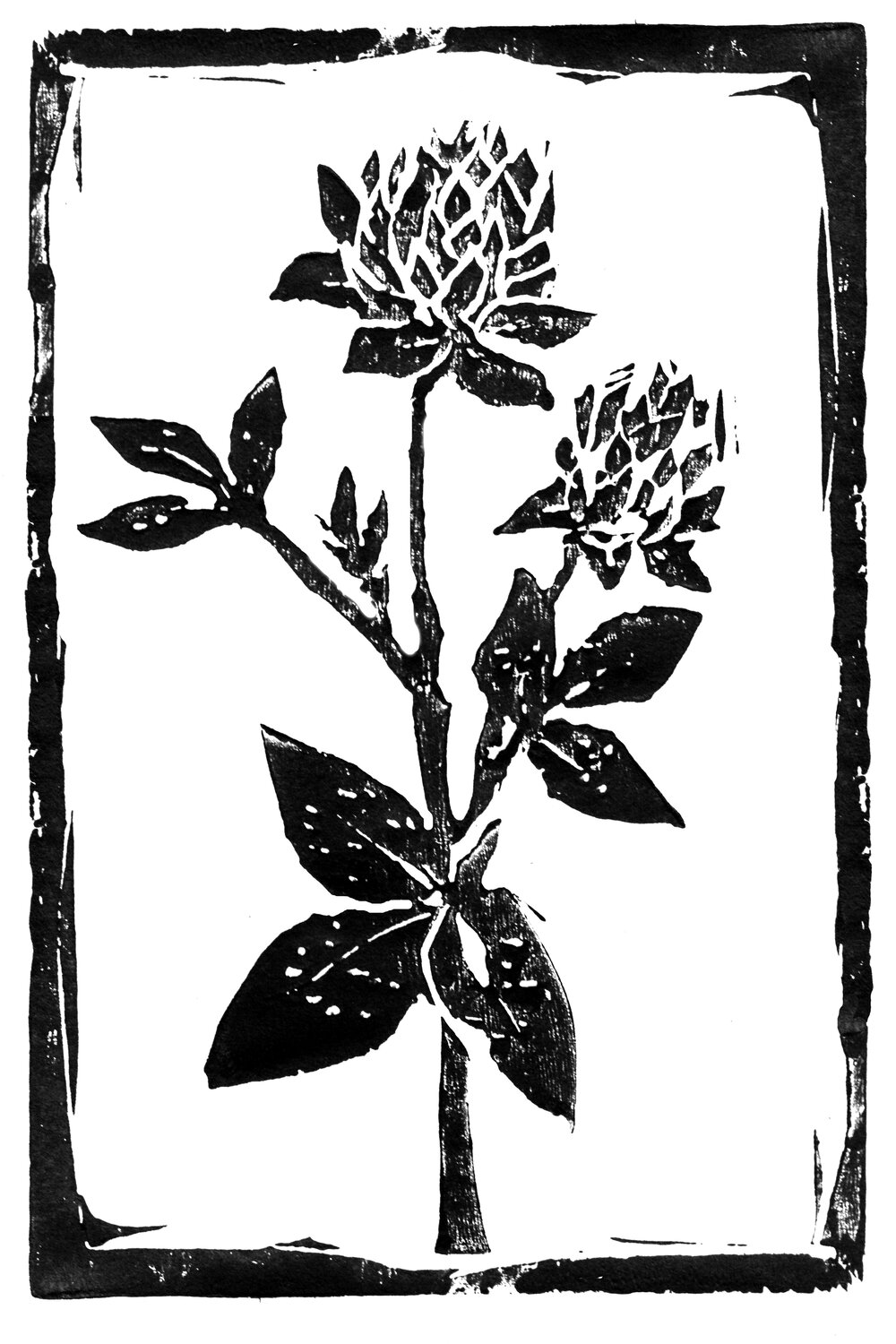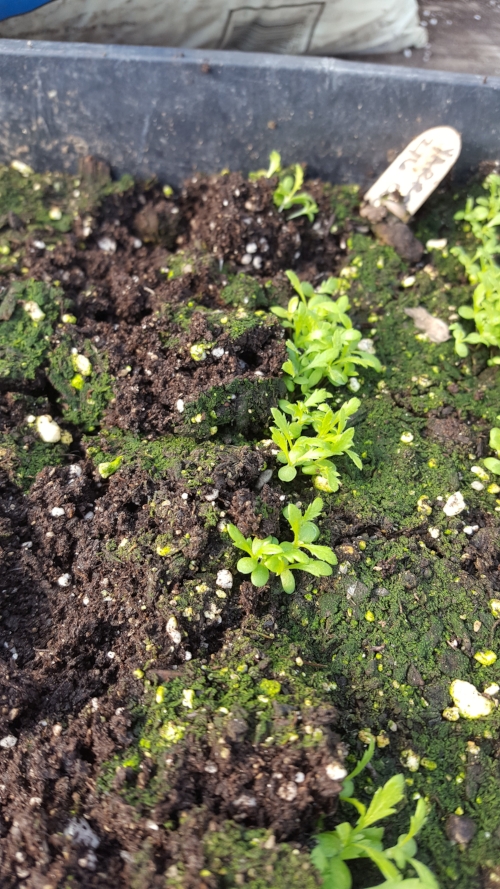August weeds
It’s mid August, and in the garden, we are spending about half of our time harvesting. There are still seedlings to transplant, but their numbers are dwindling, because in two months from now, we’ll be in the middle of October. August is notorious for weeds, because if you’ve put off weeding until now, those weeds are probably five feet tall with roots so deep they’ll pull out half the garden with them! Thanks to the hard work of our interns and a 70 year old cultivating tractor, we have avoided that scenario. The weeds seem to know, though, that their time is waning, and they seem to put extra effort into producing great quantities of seed this time of year.
Aunt Ruby’s German Green heirloom tomato
A tomato that’s ripe AND green! One of our all time favorites, I think Aunt Ruby’s German Green is best used raw. I like it in salsa, or in sandwiches, or just on its own. Tart and tangy, it is a delight. Color is most vibrant when uncooked, when cooked it is still tasty but not as pretty. Don’t use for fried green tomatoes, it will turn to mush.
Celery
I’ve been hemming and hawing about whether to harvest celery this week and I decided why wait? We are giving you the whole plant, which includes the tender heart, the central light colored stalks, and the darker outer stalks. These outer stalks have great flavor and most aren’t too tough for using raw. I found two tasty stir fry recipes that use lots of celery, in case you’re having trouble using it. Celery also freezes well, just slice and bag it up. It won’t have the same texture, but is good for cooking. Mirepoix! - Aaron
Vegetables
Melon Celery Squash or Cucumber Pepper or Eggplant Carrots Tomatoes Garlic Lettuce
Herbs
Upper Garden: Mint, Oregano, Sage, Thyme, Chives, Garlic Chives, Tarragon, Hyssop, Catnip , Winter savory, Lovage, lemon balm
Lower Garden: Parsley, Marjoram, Cilantro, Dill, Summer Savory, cutting celery, Borage, Basil
Flowers Nasturtium, Snap Dragon, Shasta Daisy, Dahlia, Sunflower, Amaranth, Dyer’s Coreopsis, Echinacea, Nigella, Zinnia
Pasta with roasted tomatoes, grilled eggplant and smoked cheese
1-2 lbs eggplant
fresh ground pepper
2 1/2 lbs tomatoes
3/4 cup red wine
1/2 large onion
parsley to taste
1 clove garlic
4 oz smoked Provola or Mozzarella (cut in 1/4” dice)
2 tbsp olive oil
1/2 tsp dried oregano
1 lb fusilli or other pasta
Slice eggplant 1/2” thick, sprinkle with salt on both sides. Leave 1/2 hour then squeeze out excess water. Brush lightly with olive oil. Grill over hot coals a few minutes on each side, until browned and tender. Cut into bite size strips. Core and quarter the tomatoes, lay on baking sheet skin down, and roast at 375 for 30-45 minutes until browning on the edges. Scoop out pulp, reserve. Chop onion and garlic, sauté in 1 tbsp olive oil until they begin to color. Add tomatoes, salt, pepper, oregano and wine. Simmer until you have a medium thick sauce. Cook fusilli, drain. Toss fusilli with sauce, eggplant strips, and smoked cheese cubes. Serve sprinkled with parsley. The Vegetarian Epicure (web), Anna Thomas
Gazpacho Andaluz
3 lbs tomatoes
2 tsp salt
3 medium bell peppers
black pepper
2 medium cucumbers
1 tsp sugar, if needed
1 onion
1 cup water
2 oz bread, crusts removed
2-3 tsp chopped garlic
1/3 cup fruity olive oil
5 tbsp sherry vinegar
garnishes:
diced bell pepper
diced cucumber
cherry tomatoes, halved
Blanch tomatoes in boiling water, peel, core, coarsely chop. Chop bell peppers, peel, seed and slice cucumbers. Chop onion and taste- if it is too hot to eat raw, only use some of it. Cut bread into chunks, soak in water until soft, then squeeze out excess. Mix all together in large bowl, then puree in blender, working in batches. Puree to desired texture. Taste and add more salt, vinegar, or sugar until piquant but well balanced. Chill thoroughly. Serve with garnishes and extra olive oil. The Vegetarian Epicure (web), Anna Thomas
Celery stir fry
2 tbsp oil
3 small dried chile peppers, broken in half (or 1/8 tsp red chili flakes)
4 cups julienned celery (2 inch long pieces)
1-2 tbsp soy sauce
a few drops sesame oil (opt)
Heat oil and chiles over high heat until chiles become fragrant. Add celery and stir fry 3 minutes. Add soy sauce, stir fry 1 minute. Add sesame oil if using. Serve hot or at room temperature. from simplyrecipes.com
Stir fried celery in meat sauce
1 bunch celery
1 tbsp soy sauce
2 tbsp sriracha or other hot sauce
1 tbsp dry sherry
1/4 tsp sugar
1/4 cup canola or peanut oil
1 clove garlic, lightly crushed
2 tsp minced ginger
1/4 lb ground pork
1/2 cup chicken stock
1 tsp sesame oil
Remove strings from outer celery stalks. Trim leaves, slice stalks into 1/4 by 1 1/2 inch sticks. Combine soy sauce, hot sauce, sherry, sugar. Heat wok over high, add 2 tbsp oil, celery, cook 1 minute. Remove celery. Reheat, add 2 tbsp oil, garlic, then ginger, pork, stirring to break up. Add sauce mixture, return celery to pan, toss. Add stock, cover, steam 2 minutes medium-low heat. Uncover, increase heat to high, stir until liquid has evaporated. Add sesame oil, toss well. Discard garlic clove. from wednesdaychef.typepad.com


